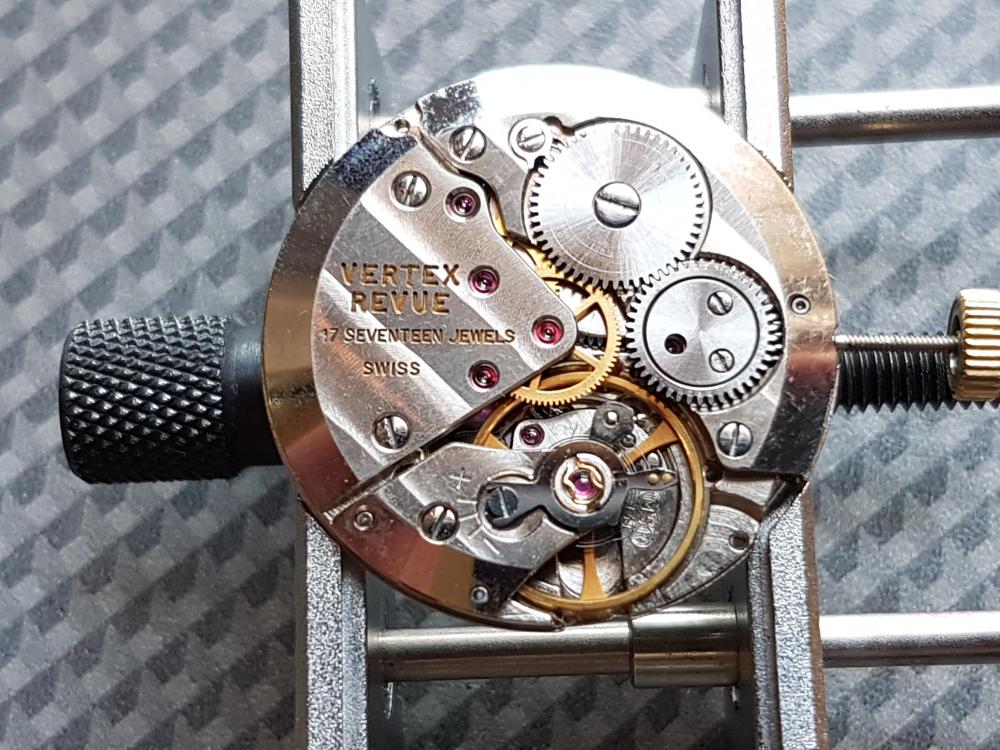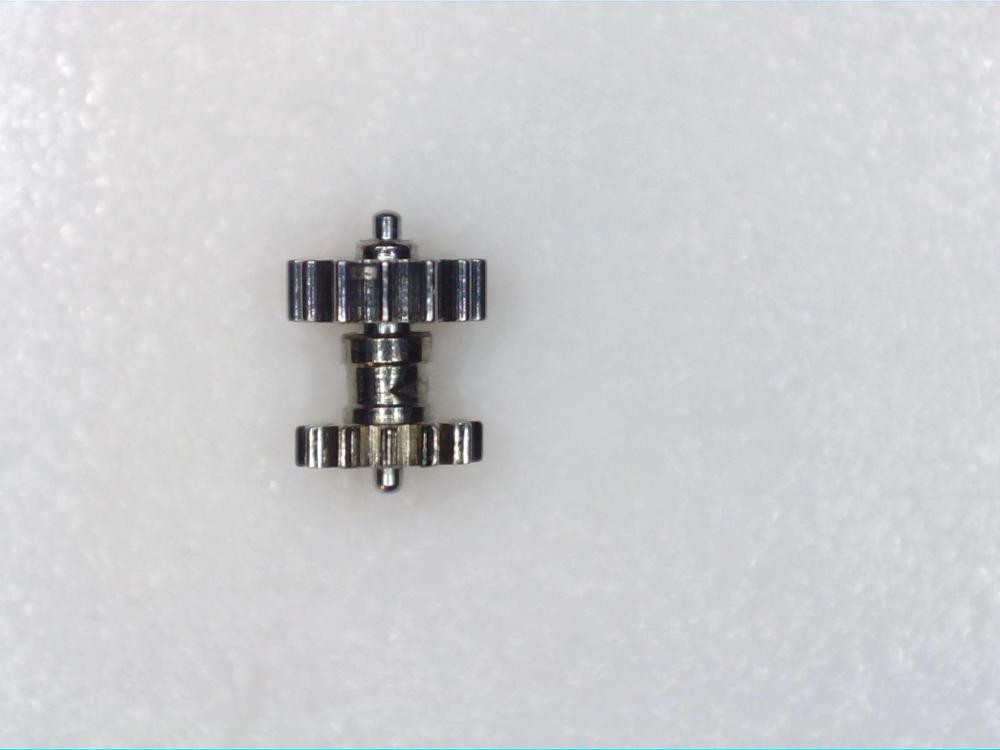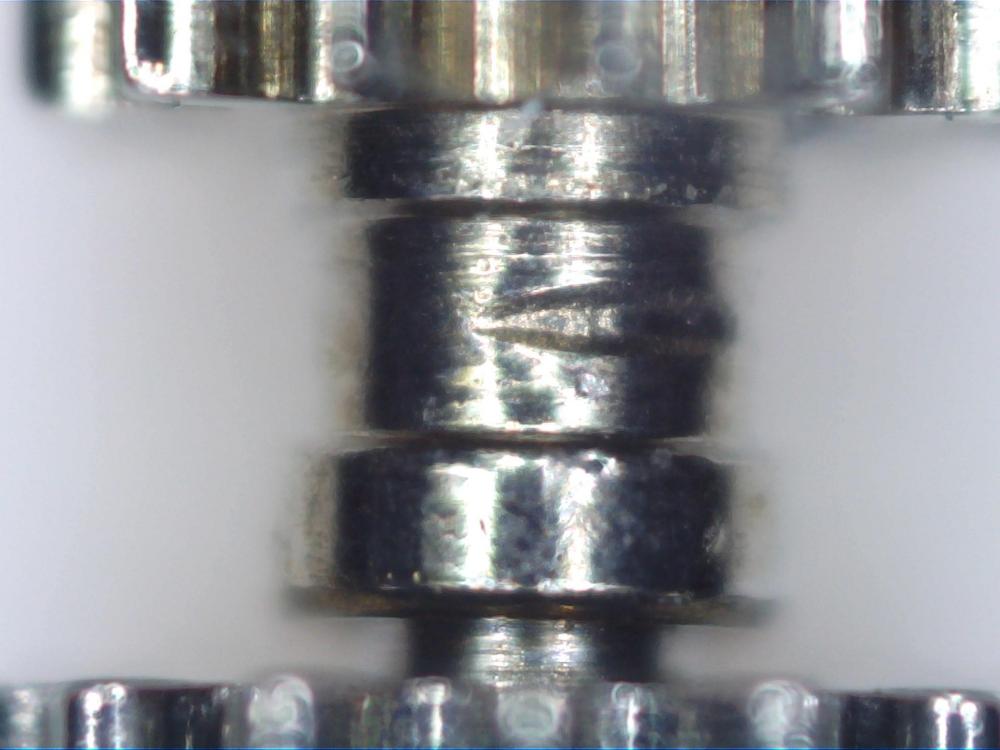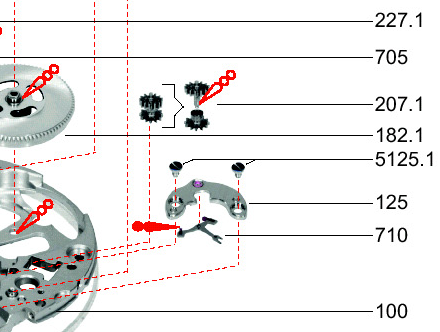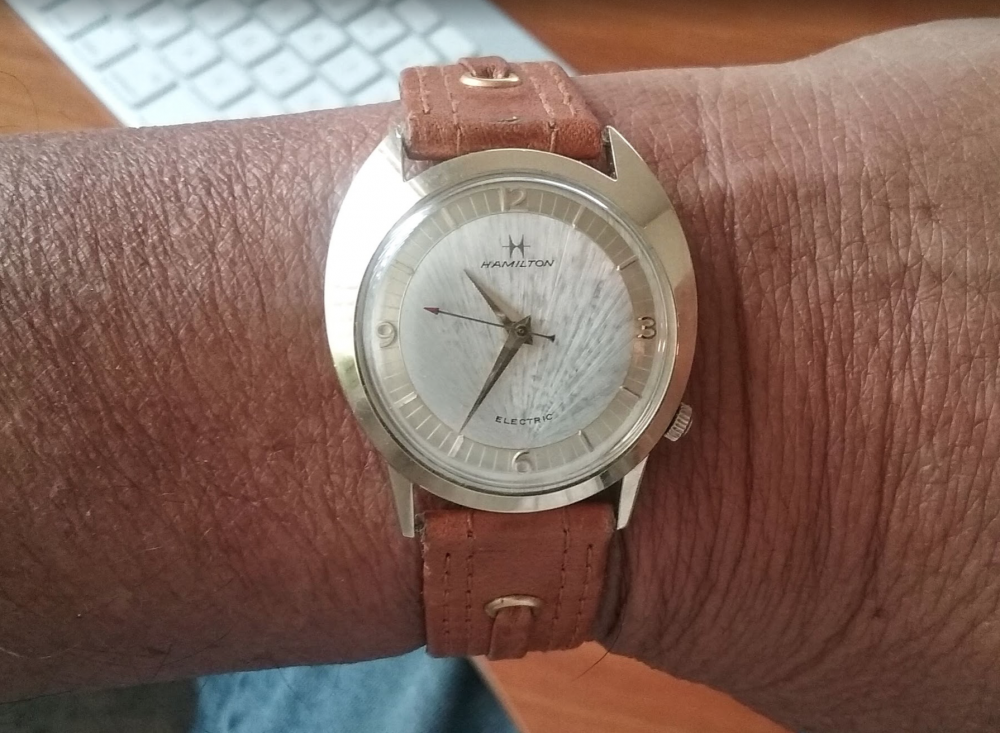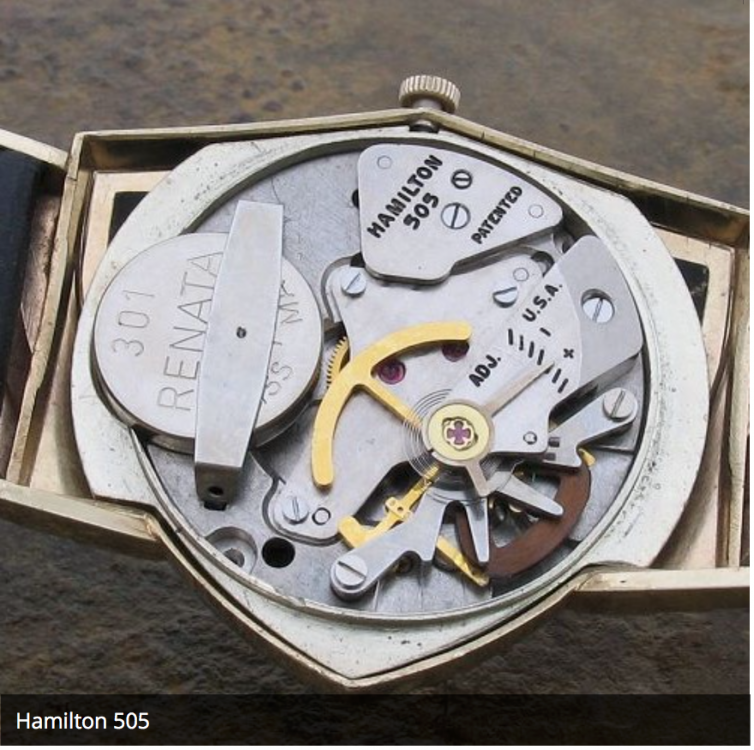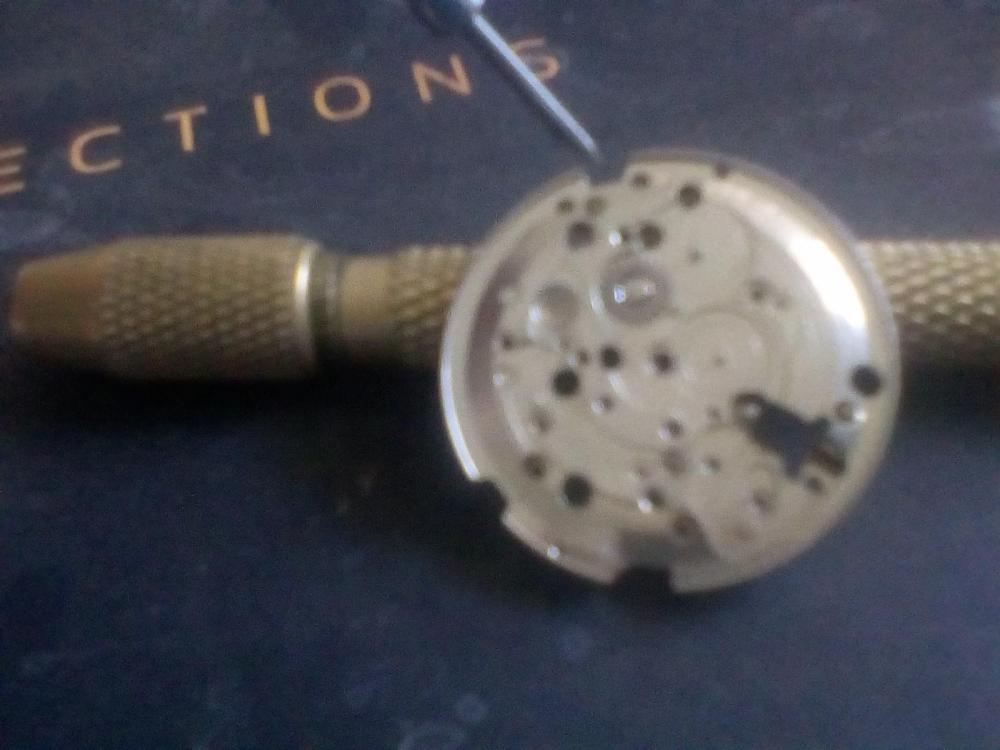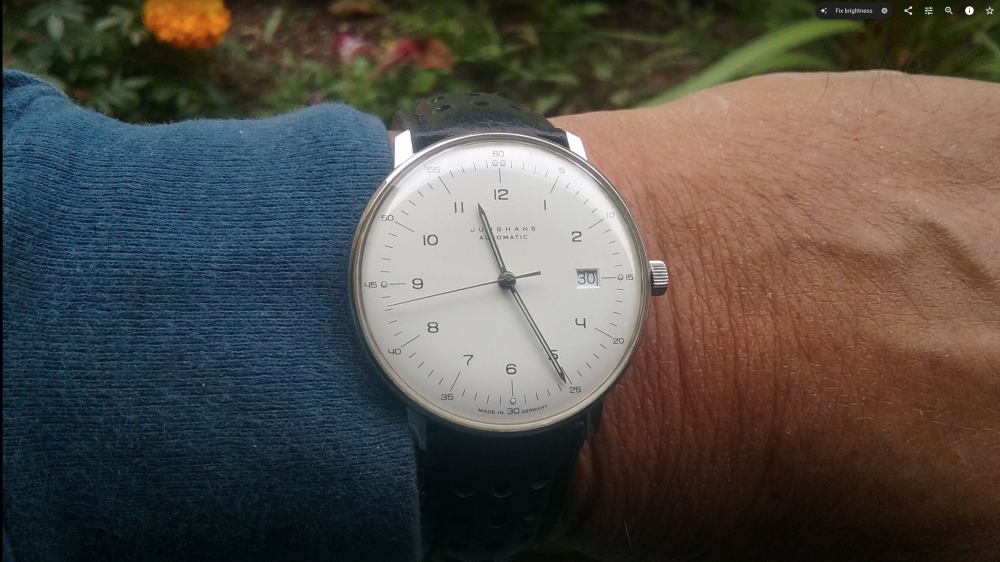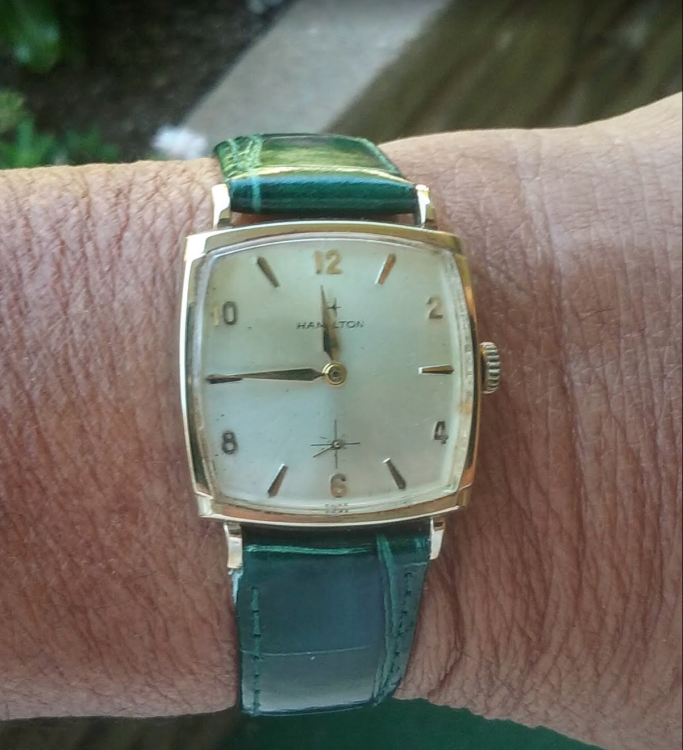Leaderboard
Popular Content
Showing content with the highest reputation on 10/07/18 in all areas
-
I had an issue with this type of movement (a T56) last year ... you might be interested to read this posting: https://www.watchrepairtalk.com/topic/7678-msr-t56-hands-not-moving-advice-please/ Mine was an odd situation and a double whammy (slipping hand caused by cannon pinion and slightly loose hand). Let us know how you get on.2 points
-
If you try to increase the friction mounted you'll actually decrease it. Really. There's a special tool for separating these (I'll post a pic when I'm back in the shop Monday) but minus that you can grab them with thin tweezers in the middle and slide them up using them as a pair of wedges.2 points
-
This MSR T43 movement puzzled me as there is no cannon pinion. Cleaned and re-assembled it runs nicely, but the minute hand slips slightly, and it's pretty loose changing time. A bit of investigation found that part 207 in the picture is called 'Minute pinion with tube' and does the job of the cannon pinion. I didn't know this when I cleaned the movement, so I want to take it apart - just pushing tweezers in to the gap isn't doing it. Any ideas how to separate it ? It's going to be a bit delicate to adjust, I haven't tried tightening pinions, and this is a small part.1 point
-
The cannon pinion was loose. I managed to split it by pushing it up the tweezers using some pegwood. Then the scary task of trying to tighten it - my first. I shoved a broach up it, but the only tool in the staking set pointy enough was the thing used to centre the holes. One (very nervous) tap with the hammer and . The friction moving the hands seemed perfect. Left the watch running for a couple of hours ..... and the minute hand had slipped a minute. A few minutes later I spotted your response. A lateral push on the minute hand showed it to be very loose. Or I thought it was. A closer look shows the hand is not slipping, but there is some play - must be the gears. I need to get the dial off for another look.1 point
-
1 point
-
Looks like the same movement they put in rotary watches, have a look on ebay and you will find them, i have one here, another job I had, apparently the owner fell over, in doing so then top plate got bent balance staff snapped hands fell off!!! I just bought a complete rotary watch off the bay for around £15 and swapped the movements. But I would take others advise and return it, im doing the exact same thing on a fussee pocket watch that is beyond me at the moment, the other pocket watch they gave me is giving me so much grief wish I hadn't taken it on either but there you go.1 point
-
Is there another screw hole around the other side? Is there not a screw in it either? Take a few pics around the edge of the movement, that may not be the dial screw hole.1 point
-
One of the problems with the time graph for results is we see that the dial is facing up. The problem with timing results the dial up and dial down position is resting on the end of the pivots which is the least friction. So we like to see one of these.we also need a case wristwatch crown down. I am guessing that amplitude of 214° that crown down the amplitude drops considerably which tells us this watch desperately need servicing. Then anything beyond this without removing the hands and dial to observe is basically guessing. I find this is an interesting sentence? When you have to shake the watch a lot to get at the start it sounds like a watch that is totally wound down. If it's a watch that is in desperate need of servicing then this is also what you're describing. So I was thinking an experiment about one hour maybe two hours before it comes to a stop put it back on the timing machine. Both dial-up like you did before and crown down let's see what the amplitude is at the end of 24 hours. That's the give us a clue of what's going on then beyond that they hands and dial have to come off.1 point
-
Thanks, guys! I felt slightly bad about this at first, but having read your posts I will simply return it to the owner telling him I'm just not up to it. He knows I'm not a professional, and I was very careful not to make any promises, so we should be fine. After that, I will just simply forget about this "incident".1 point
-
I would love to have a go at fixing that................only if It was mine and had paid a couple of bob for it.1 point
-
A cheap movement for sure and possibly all sorts of issues. Return the watch giving your friend your honest opinion. These cheap watches have numerous faults such as poor screws that shear etc.1 point
-
I have no idea what it is, but it's like with the old clock were multiple people through the centuries worked on, you have no idea what has been done and what is hidden. Once you start on it, you are completely on your own. There is no reference, no documentation and most likely nobody on this forum can help you. I don't think you need to beg to be excused. It requires wisdom to know where your limits are; to know what you can do and can't do. That can only be respected.1 point
-
Hi friend, I have never seen one of those before. I will be kind and my opinion is that it is Cheap whatever it is. Return it to your friend and beg to be excused. Regards, Mike.1 point
-
Maybe not a fake watch. But does looks like it's badly made. i should say it's junk and i am sorry for your friend that he paid that kind of money for that. Bye him a nice vintage watch from Tradera and service it for him instead.1 point
-
And there is/was nothing wrong with your gut feeling I had a similar experience with an antique (+/- 1730) clock I was asked to have a look at ....... skip to the end if you thinks it's too long or boring (however it's interesting to read how the story develops / changes every time new information surfaced) https://www.watchrepairtalk.com/topic/7826-tools-required-for-an-antique-long-case/?page=21 point
-
Be careful if you go to far it will be extremely difficult to reverse the indent.1 point
-
To me this watch screams to keep your hands off !!! ....... you have no idea how many Gremlins this watch has? My honest advice; Return this watch to your friend saying it's above your abilities / capabilities. There is nothing wrong with that. Better returning the watch as it is, than returning a plastic bag full of parts and a "I'm sorry". Better be safe than sorry .....1 point
-
It would've been nice if the watchmaker had given you a model number? Then is this an automatic versus manual wind watch? The problem with finding specific parts is the part you're looking for may be the wrong part which is why you're not finding it. That's why it's better to start with the basics of the model number the watch we can look it up in our references and see if they all agree. Plus it's also helpful to measure the original spring to make sure that agrees with whatever you are finding in the specifications. Occasionally we get some strange watches were nothing agrees Which makes things much more interesting.1 point
-
I think I'll do that. As it's a bit loose I guess there's no point trying to split it to clean it. I'll try using one of the fine pushers in my jeweling tool.1 point
-
That's a new one for me. Can to adjust the pinion without separating it. I use a anvil type stump with my jeweling tool. You just need to achieve a little friction.1 point
-
1 point
-
There are small screws on the sides of the movement that press against two ‘feet’ that go into holes in the movement. Loosen the screws and wiggle the dial off. Sent from my iPad using Tapatalk Pro1 point
-
Just my two cents as I don't know your Seiko; as Matabog says above. To investigate you have to get to the date mechanism, removing hands and the dial. If the date mechanism is driven from the hour-wheel, remove the hour wheel and observe the movement during the date-change period. If it keeps running happily, you excluded the wheel train and can zoom in on the date mechanism; trouble shooting by elimination. Check the amplitude again, as it doesn't seem high. It could also be that a part of the keyless works runs too heavy. Removing the hour-wheel may give you more information. A combination of the keyless, date-change and low amplitude may cause the watch to stop. When was the last service?1 point
-
1 point
-
1 point
-
Thanks @oldhippy; yes, after writing the article above it became clear to me that even if option 1) was chosen, that the "fix" would tackle only a part of the problem, not the whole problem. All the previous "fixes" done to this movement also focused on just a part of the escapement-problem, not the whole. Fixing a part of the problem will be relative short lived as well. I decided that this was no longer an option for me. One does it either right or you don't do it at all. Today, I had a discussion with the owners and it has been decided that the clock will be cleaned, assembled, oiled and optimal adjusted with all its flaws. The clock will most likely only run on special occasions and therefor it may last for quite some time. I told them an easy to remember analogy: it's like driving an old car by which you now know it has an engine problem; it may brake down today, but if you drive it carefully, it may do you another 50,000 km ...... ?? after which they can still decide to do a proper full-restoration or not. Now for them, after having looked at a still-standing clock for 20 years, they not only get a clock back which runs, but also a well detailed report of what my findings were. It's now up to them to take at a later date action upon those points. For me it's now a matter of assembling, oiling, adjusting, see if I can get the date & moon working and installing the "missing" moon-indicator. A test run and thereafter it's back to the owner. Disappointed ..... not really. I learned a lot and for me, I stopped in time. Rather a running 18-century clock and well informed owners than knocking on the door with a plastic-bag full of parts and a message: "I'm sorry" ........ Thank you all for your excellent help !!1 point





